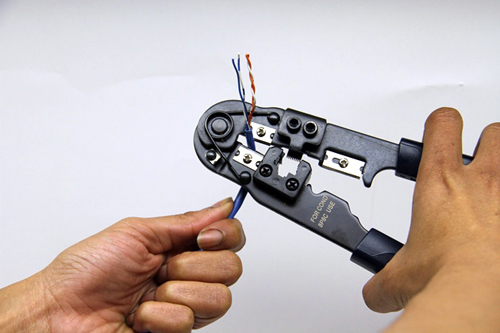The original Ethernet cable, familiar to anyone who has spent some time messing about with computer networks, is a cable that ends in a dock that looks a little fatter than a regular phone jack, and easily inserted network adapters other machines. The standard Ethernet cable wiring is the Category 5. Ethernet cabling is an industry standard everywhere, and consists of 4 pairs of different colour threads twisted around their individual wires and isolated from each other.
Ethernet cabling is twisted internally because this type of internal configuration prevents interference and signal leakage between the different chapters. Each wire in a cable is one of 4 different colours, like orange, brown, blue and green, each twinned with a partner who is a striped version of this cable. The various wires are insulated from each other in order, as mentioned above, to avoid signal leakage, so when cut out and measuring its own cable wiring is necessary to ensure that cut only last half inch of each wire. This prevents mixing different lines and cause interference.

Category 5 (Cat-5) cabling was introduced in order to increase the speed and performance through computer networks, using this cable for anyone who wants to access and use the Internet and all its contents is recommended. A Cat-3 standard normal, like a dial-up connection, do not take no more than 10 MB of data per second. In contrast, the Ethernet cable wiring can carry up to 10 times more data per second. As a result, it is necessary for anyone wishing to use services such as Internet telephony and video, or to view and access streams audio and video standard. The Cat-5 standard was the main standard but has even been phased out by a newly developed standard costing the same. This is the Cat-5e standard, which takes the same data that a Cat-5 cable, but is useful for business networking because of minor technical changes that make data better support. Watch the video provided in the wiring of Ethernet cable and how to connect a cable.
Cable Ethernet cabling is available in several colours, which are irrelevant to what the cable itself can do. The internal wiring of the cable is important. As mentioned above each cable comes with 4 pairs wrapped in insulating sheaths twinned as standard cabling, and should be cut only in the last half inch in order to preserve this isolation. This is because each of the 4-wire Ethernet cable into a different signal leads and the mixture of these signals makes the data within the cable to exit at the end a little confusing. This may not seem like much, but remember that could lead to annoying delays relative and in some cases no connection at all. So when deciding on the Ethernet cable wiring, make sure you carefully cut and shape to your workout.
This information has been shared on behalf of GradConn , is offering a wide variety of custom cable assemblies, coaxial cable assemblies, with particular strength in micro coaxial cables for wireless markets, such as GSM, GPS, Wireless LAN (WLAN), Wi-Fi and Bluetooth.



